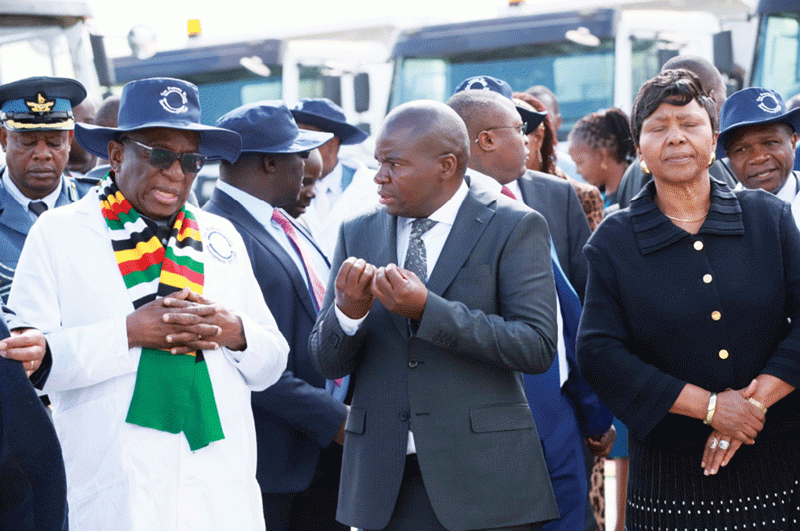
THE recent commissioning of the Geo Pomona waste-to-energy facility in Harare has unveiled an unprecedented opportunity to revolutionise Zimbabwe's approach to both waste management and energy generation.
As the facility gears up to inject 22 megawatts into the national grid while processing 650 tonnes of waste daily, it has established a compelling blueprint for addressing Zimbabwe's persistent energy deficit through innovative, environmentally-conscious solutions.
The launch ceremony, graced by President Emmerson Mnangagwa and acting Local Government minister Winston Chitando, showcased how strategic public-private partnerships can transform environmental challenges to energy opportunities, setting a precedent that demands rapid replication throughout the country's urban and rural landscapes.
The transformative potential of waste-to-energy projects extends far beyond Harare's boundaries, with major urban centres like Bulawayo, Mutare, and Gweru facing similar waste management challenges that could be converted into energy solutions through comparable initiatives. These cities, collectively processing thousands of tonnes of waste daily, could contribute substantial power to the national grid while simultaneously addressing their sanitation challenges.
During the Geo Pomona commissioning, mayor Jacob Mafume emphasised this dual benefit, stating, "This project is a major milestone in our journey to restore pride in our cities while creating sustainable energy solutions." His words resonate with the experiences of successful waste-to-energy projects across Africa, such as Ethiopia's Reppie facility in Addis Ababa, which processes 1 400 tonnes of waste daily while generating significant electrical power. Similarly, South Africa's New Horizons Energy plant in Cape Town demonstrates how organic waste can be converted to compressed natural gas, providing both energy and environmental benefits.
Looking beyond African borders, Zimbabwe can draw valuable lessons from countries like Sweden, where waste-to-energy facilities process nearly 50% of household waste, contributing significantly to the national energy mix while maintaining some of the world's highest recycling rates.
The Swedish model demonstrates how integrated waste management and energy generation can create circular economies, a concept that Zimbabwe could adapt to its unique context. As Chitando noted, "We must learn from global success stories while developing solutions tailored to our local circumstances."
However, the energy crisis facing Zimbabwe demands a comprehensive approach that extends beyond urban centres to rural communities, where grid access remains limited and agricultural waste presents an untapped energy resource.
- Stampede for Zim oilfields... US$17m raised ahead of landmark drill
- All eyes on the Zambezi valley oil rigs
- Setbacks hit Zim oilfields
- Invictus in potential hydrocarbon findings
Keep Reading
The abundance of agricultural biomass in farming regions, combined with Zimbabwe's significant solar potential, creates opportunities for developing integrated renewable energy systems. Rural communities can establish biogas plants utilising agricultural waste, while solar farms and micro-grid systems can harness the country's abundant sunshine.
This approach mirrors successful initiatives in India, where the Biogas-fertiliser Management (BGFM) programme has transformed rural energy access while providing additional income through organic fertiliser production.
The urgency of scaling up these initiatives becomes apparent when considering Zimbabwe's industrial and agricultural sectors' energy needs. The current power deficit severely constrains economic growth, limiting manufacturing output and agricultural mechanisation.
The Geo Pomona project demonstrates how innovative thinking can address multiple challenges simultaneously — waste management, energy generation and economic development.
This model must be expanded and adapted across sectors and regions, with government policies and incentives aligned to attract investment in diverse energy projects.
Kenya's success with geo-thermal power at Olkaria and Morocco's ambitious Noor solar project provide valuable lessons in how African nations can leverage on their natural resources for sustainable energy production.
Zimbabwe's energy transformation requires a coordinated approach that leverages on each region's unique resources and opportunities. The eastern highlands' wind potential, reminiscent of South Africa's successful Jeffreys Bay Wind Farm, can be harnessed through similar large-scale projects.
The abundant solar resources in Matabeleland could support projects comparable to Namibia's Gobabis Solar Park, while agricultural waste in farming regions can to fuel biogas initiatives similar to those thriving in Germany's rural communities. These resources, when properly harnessed through strategic partnerships and innovative technologies, can create a robust, diversified energy network.
The Invictus Energy project in Muzarabani adds another dimension to this energy matrix, highlighting the importance of pursuing multiple energy sources simultaneously.
Drawing parallels with Mozambique's successful natural gas developments, Zimbabwe must ensure that such projects complement rather than compete with renewable energy initiatives. The experience of countries like Denmark, which successfully balances various energy sources while maintaining a strong commitment to sustainability, provides key insights for Zimbabwe's energy diversification strategy.
Zimbabwe needs immediate action to replicate and scale successful models like Geo Pomona while developing new approaches tailored to different regions and resources. This requires streamlined regulatory frameworks, transparent procurement processes and strong community engagement. The success of Brazil's PROINFA programme, which effectively integrated various renewable energy sources while ensuring community benefits, offers valuable lessons for Zimbabwe's energy sector development.
The role of education and skills development cannot be overlooked in this transformation. Technical training programmes, similar to Germany's dual education system for renewable energy technicians, must be established to create a skilled workforce capable of maintaining and expanding these energy initiatives. Local universities and technical colleges should be empowered to offer specialised courses in waste-to-energy technologies, solar installation and biogas system maintenance.
For Zimbabwe, the opportunity to revolutionise its energy sector through waste management innovation has never been more apparent. The Geo Pomona project has demonstrated the viability of waste-to-energy initiatives, but its true significance lies in establishing a model for sustainable development that can be replicated and adapted nationwide. Through strategic partnerships, technological innovation and unwavering commitment to implementation, Zimbabwe can transform its energy landscape, powering economic growth while addressing environmental challenges.
The experiences of successful projects worldwide provide a rich knowledge base from which to draw, ensuring that Zimbabwe's energy transformation benefits from global best practices while remaining firmly rooted in local realities and needs. The time for incremental changes has passed; the nation must embrace comprehensive energy transformation, building on the foundation laid by pioneering projects like Geo Pomona to create a sustainable, energy-secure future that benefits all Zimbabweans.
The success of the Pomona facility, as noted by Mnangagwa, "marks a significant step towards modernising our infrastructure and ensuring sustainable development."
Lawrence Makamanzi is a distinguished analyst and independent researcher, passionately sharing his insights in a personal capacity. He is reachable at blmakamanzi@gmail.com or 0784318605.










